20 Survival Items All Hikers Should Carry
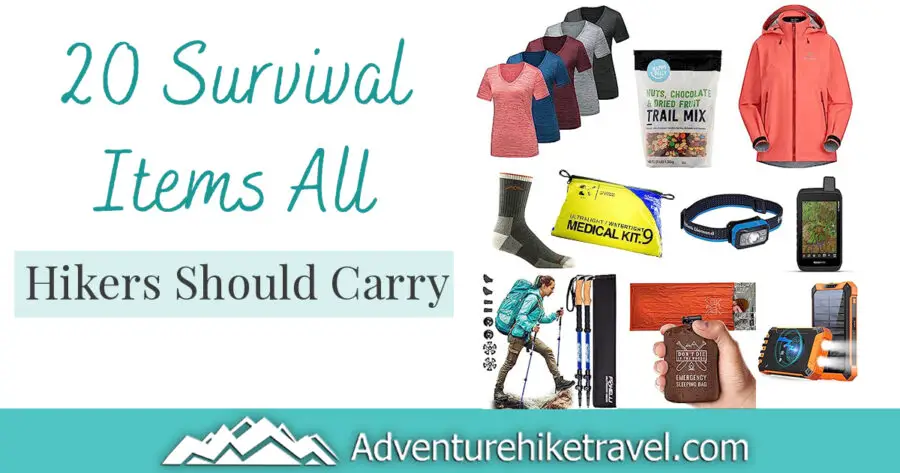
If you’ve ever been on a hike, you know that it’s essential to be prepared for anything. Whether you’re taking a short-day trip or a multi-day excursion, it’s important to have the right gear to ensure your safety and comfort in the outdoors. In this article, you’ll learn exactly what items you should pack on your next hiking adventure. We’ve assembled a list of 20 essential items, ranging from life-saving medical supplies to everyday items like snacks and sunscreen that are easy to overlook, but still important to have. With this comprehensive guide, you can be sure you’ll be prepared for whatever your hike throws your way.
Navigation Equipment
Not all trails are easily navigable, especially when hiking more remote trails, or in the off-season when there is more snow and mud. But sometimes hikers get lost just stepping a few feet off the main trail and get disorientated and lose their way. It is highly crucial that all hikers bring navigation equipment with them on a hike. Having navigation equipment can mean the difference between life and death. Finding your way is super important. It's good to have a physical topo map of where you plan on hiking as well as a digital map. Now There are lots of highly accurate devices with digital download maps and features. Another resource I love is downloading the Gaia GPS app to your phone. If you are not ready to splurge on a device with downloaded maps the Gaia app is absolutely awesome and free to use. Click to go to Gaia GPS
Lightweight Emergency Bivvy or Blanket
Conditions can change quickly in the mountains. When out on any hike I always make sure I have an emergency bivy with me. Temperatures can rapidly drop during the night or you can get hypothermia quickly when you are injured and unable to move to keep warm. It can sometimes take search and rescue 20+ hours to get to you. Having an emergency bivvy can mean the difference between life and death. These survival blankets do not weigh much and are 100% worth bringing.
First Aid Kit
When hiking, accidents can happen. Even if no one in your group gets injured sometimes you may come across another hiker that needs first aid. Having a first aid kit is an item all hikers should carry. It's good to be prepared for big injuries to small cuts, scrapes, or allergies.
Duct Tape
When hiking Duct Tape can be an absolute lifesaver. Duct Tape can be used for a wide variety of uses. From preparing tents and trekking poles to patching jackets and backpacks there is a never-ending list of ways duct tape can help you out. I have personally used duct tape to hold my hiking boot together enough to make it off-trail. Without duct tape, I am not sure what I would have done. Hiking down barefoot or just in socks would not have been fun. Sometimes your gear unexpectedly breaks and duct tape can be an awesome solution to help you get by and get back to your car in one piece.
Paracord
Another survival item all hikers should carry is a paracord. There are numerous uses for paracord and in wilderness survival, it can be a life-saving tool. You can hold and repair gear, make a makeshift stretcher for an injured friend, and suspend food into the air so your meals do not get eaten by wildlife. You can take the inner fibers of paracord and make fishing nets or lines. Paracord should be in every hiker's backpack.
A Way to Start a Fire
Having a way to start a fire is a must-have survival item for all hikers. If you are stranded in the woods having a way to start a fire to keep you warm or signal for help can be a way of keeping yourself alive.
A Way to Filter or Purify Water
Another critical survival item all hikers should carry is a way to filter water. Having a water filter or water purification tablets can help prevent hikers from getting sick from giardia or other bacteria or parasites that reside in the water. If a hiker accidentally doesn't bring enough water with them on a hike and they are in a pinch of needing to filter or purify water to drink this tool can prevent them from getting ill. It doesn't matter how crystal clear or glacial-fed the water is. You never know if there is a dead, elk, deer, moose, mountain goat, or other animal decomposing in the water just upstream or buried beneath the icy lake. It is best to filter your water just in case.
Sunscreen
Some of the worst sunburns of my life have occurred while hiking. Bad sunburns can cause skin cancer and having your skin burned to a crisp is just plain painful. Sunscreen definitely makes my list of items all hikers should carry. Sunscreen can make the difference between an enjoyable day out in the mountains and a miserable one.
Headlamp
When hiking sometimes the unexpected happens and you end up on the trail longer than you anticipated. Hiking in the dark without light can get dangerous quickly and that is why having a headlamp is a must on my list of gear hikers should always carry.
Knife or Multi-Tool
A knife or multi-tool stands as an indispensable survival item that all hikers should diligently include in their gear. Its significance lies in the myriad of essential tasks it can fulfill during outdoor expeditions. Whether it be cutting through tangled vegetation, preparing food, constructing a shelter, crafting tools, or tending to medical needs, a reliable knife or multi-tool serves as a reliable companion, empowering hikers with the necessary capabilities to overcome challenges and ensure their safety and well-being amidst the wilderness.
Phone Power Bank
Having a way to recharge your electronics can be life-saving. If there is an emergency and you need to dial 911 when you get a bar of services or if you are using your phone as a GPS navigation to keep you on the trail. Phone power banks are a great reliable way to keep things working.
Bear Spray
Bear Spray is an absolute must when hiking. Having a 40-30 foot range to help stop a charging bear from continuing forward can be life-saving. Bear Spray is a great deterrent to keep you safer while on the trail.
Bug Spray / Mosquito Protection
One item all hikers should carry that makes their time in the woods better is high-power bug repellent. Getting eaten alive by tens of thousands of bloodthirsty mosquitos who think you are an all-you-can-eat bug buffet is miserable. Having a way to battle the hordes of mosquitos is critical.
Moisture Wicking Clothes.
Every year there are hikers that die of hypothermia or have a heart attack or heat stroke when hiking in the heat. Many of these hikers make the mistake of wearing the wrong type of clothes while hiking. Moisture Wicking Clothes are designed to efficiently manage moisture by pulling sweat away from the skin and allowing it to evaporate, keeping hikers dry and reducing the risk of hypothermia. By effectively regulating body temperature, moisture-wicking clothes help prevent overheating during strenuous activities and maintain thermal balance in changing weather conditions.
Extra Food
Carrying extra food during hikes is a crucial survival strategy that every hiker should prioritize. While embarking on outdoor adventures, unexpected circumstances such as getting lost, encountering delays, or facing unforeseen challenges can prolong the journey. In such scenarios, having an ample supply of food becomes essential. Extra provisions not only sustain energy levels but also offer a vital lifeline during emergencies or when unforeseen circumstances hinder access to immediate food sources.
High-Pitch Whistle
Including a high-pitch whistle as a survival tool is a wise choice for hikers. In the vast and unpredictable wilderness, communication is vital for ensuring safety and receiving assistance in times of distress. A high-pitch whistle serves as a compact and reliable signaling device that can be heard over long distances, even in adverse weather conditions or dense terrain. By carrying a whistle, hikers can quickly attract attention and alert others to their presence, increasing the chances of rescue or assistance in case of emergencies. This simple yet effective tool can potentially be a lifesaver, providing hikers with a sense of security and an additional means of communication when traditional methods are compromised or impractical.
Waterbottle or Water Bladder
A water bottle or water bladder serves as a vital survival tool for hikers, offering a reliable means of hydration in challenging outdoor environments. Proper hydration is crucial for maintaining optimal physical performance, regulating body temperature, and preventing dehydration-related health risks. By carrying a water bottle or water bladder, hikers can conveniently store and carry an adequate supply of water, ensuring they stay hydrated throughout their journey.
Trekking Poles
Trekking poles offer a multitude of uses that can significantly enhance the survival capabilities of hikers in various situations. These versatile tools provide stability and balance while traversing uneven terrain, reducing the risk of falls and injuries. In challenging environments or steep ascents and descents, trekking poles serve as valuable aids, distributing weight and easing the strain on the legs, ultimately conserving energy. Moreover, trekking poles can double as makeshift tent poles, allowing hikers to set up shelters or tarps for protection against harsh weather conditions. In river crossings, they provide stability and support, assisting hikers in maintaining balance and preventing slips. Additionally, trekking poles can be repurposed as impromptu tools for clearing paths, testing ground stability, or even signaling for help in emergencies. Trekking Poles can be used to keep back a bear or other wild predator, can be clanged together to create loud noises, and can even be used to help create a makeshift stretcher for an injured hiker or a makeshift splint.
Extra Pair of Dry Socks
An extra pair of dry socks proves to be a crucial survival item for hikers, offering multiple benefits and ensuring foot health in challenging outdoor conditions. Hiking often involves traversing various terrains, which can lead to sweat, moisture buildup, and even accidental submersion in water. Carrying an extra pair of dry socks allows hikers to change into fresh and dry footwear, reducing the risk of blisters, fungal infections, and discomfort caused by wet or damp socks. Moreover, dry socks provide insulation, helping to regulate foot temperature and prevent heat loss, especially in colder environments. By prioritizing foot hygiene and comfort, hikers can prevent foot-related ailments, maintain their mobility, and increase their overall endurance, making the extra pair of dry socks a valuable asset in their survival kit.
Rain Jacket
Rain jackets are an essential survival item for hikers, serving as a critical defense against inclement weather conditions and safeguarding against the risk of hypothermia. When hiking in wet environments or encountering unexpected rainstorms, a reliable rain jacket acts as a protective barrier, keeping hikers dry and shielding them from the chilling effects of moisture. By preventing water from penetrating through the fabric, rain jackets help regulate body temperature, preserving warmth and reducing the likelihood of hypothermia, a potentially life-threatening condition caused by prolonged exposure to cold and dampness.
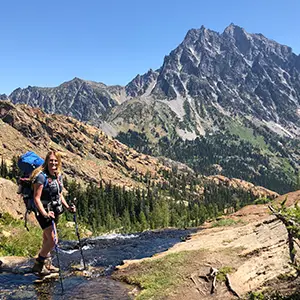
Want To Fill Your Life With Adventure?
Join our newsletter for an adrenaline-fueled journey! Receive exclusive updates on travel tips, gear reviews, epic hikes, captivating stories, and inspiration to turn your dreams into reality.
Don't just dream it, live it! Get Out There!

Other Blog Posts You May Like
Gear Review Of The Klymit Static V Sleeping Pad
10 Amazing Must-Have Camping Gadgets
12 Years of Hiking with Meindl Boots: The Ultimate Review
45 of the Best Stocking Stuffers for Hikers and Backpackers
35 Great Trail Running Shoes for Women
35 Great Trail Running Shoes for Men
What to Pack for a Sunrise Hike
5 Reasons to Buy LOWA Women’s Renegade GTX Mid Hiking Boots
25 Fantastic Outdoor Books for Hiking In Washington State
7 Ways to Save Money on Hiking & Camping Gear
LifeStraw Go 2 Water Bottle: Hiking Gear Review

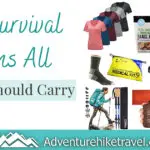
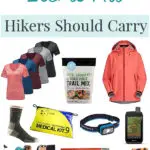
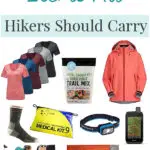
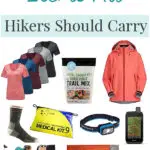
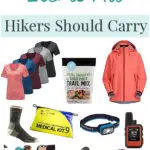
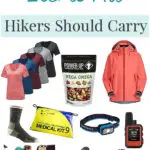
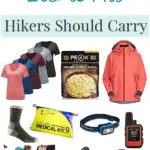
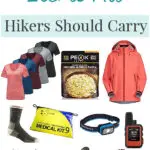
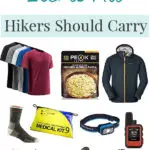
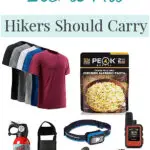
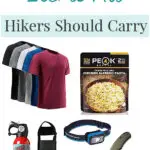
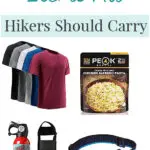




![Washington National Parks [Map Pack Bundle] (National Geographic Trails Illustrated Map)](https://m.media-amazon.com/images/I/41rqo63WUHL._SL500_.jpg)

![Utah National Parks [Map Pack Bundle] (National Geographic Trails Illustrated Map)](https://m.media-amazon.com/images/I/41KfP6bvVkL._SL500_.jpg)


![Don’t Die in The Woods - World’s Toughest Survival Bivy [with Hood Extension] Extra-Thick Emergency Sleeping Bag with Ripstop Nylon Stuff Sack - Built with Space Blanket Thermal Mylar](https://m.media-amazon.com/images/I/51XyR4erbHL._SL500_.jpg)



































































































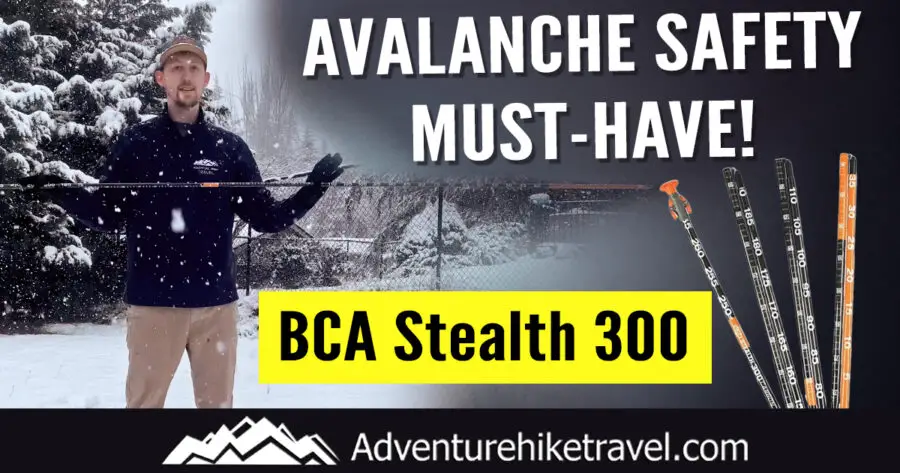

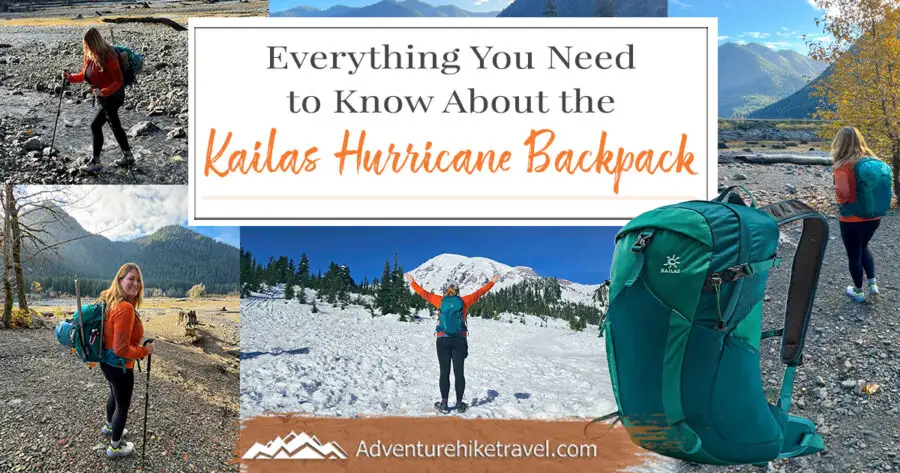
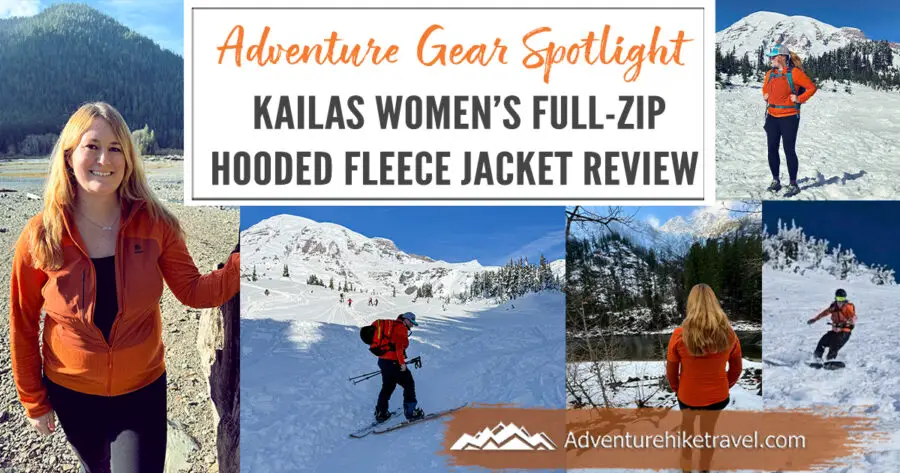

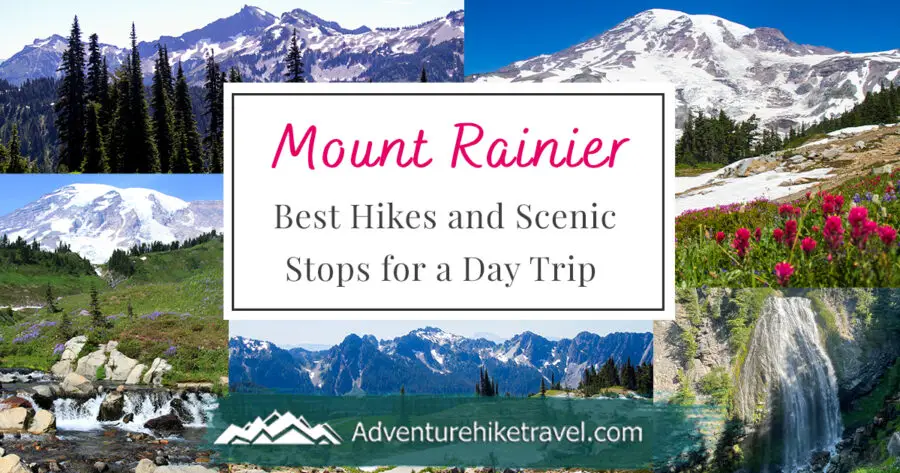


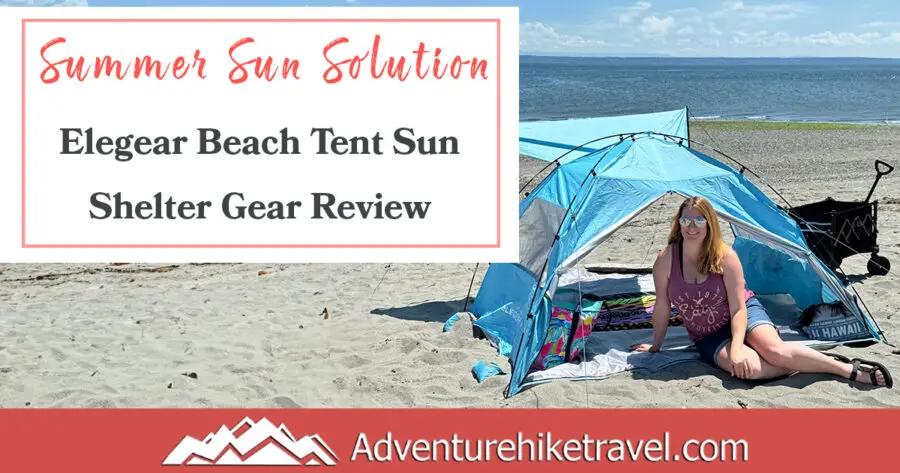
Hello,
I found the article “Survival items for Hiking” to be very informative and helpful. I am thrilled to be hiking in North India soon, and I am grateful to have found this information.
I think the article is a valuable resource for anyone who is planning a hike, especially if they are hiking in an unfamiliar area or in a remote location. I would definitely recommend this to anyone who is interested in learning more about survival kits for hiking.
Thank you!
Thank you so much for your kind words! I’m delighted to hear that you found the article ‘Survival items for Hiking’ informative and helpful. I’m excited for your upcoming hiking trip in North India as well. Your support and recommendation mean a lot, and I’m glad the article served as a valuable resource for you. Wishing you a fantastic and safe hiking adventure!
-Samantha